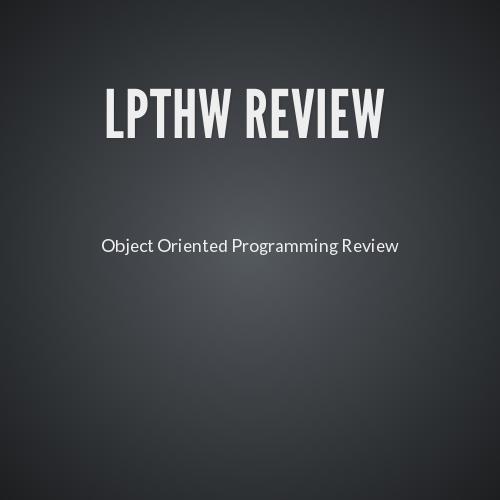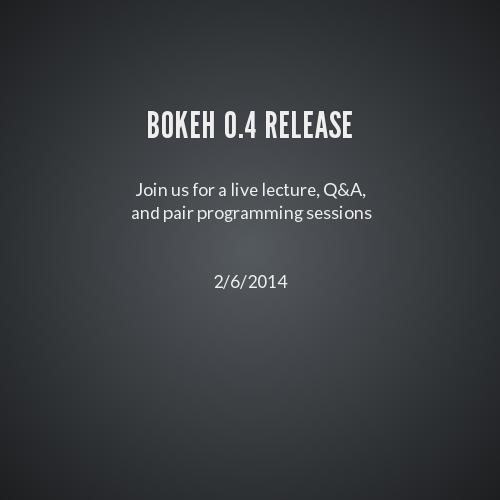The Setup
OOP in Python, terminal, git,
& configuring your Django dev environment
01/15/2014
Object oriented Programming
Save a script (called "walker") in the IDE with these specs:
A person (aka The Walker) walks one step at a time
in either the left, right, forward, or back direction.
Each step is randomly chosen, so The Walker is just as likely to step forward as they are to step left. If The Walker takes 1000 steps, where will they land in terms of (x, y) coordinates?
What will their average (x,y) coordinates be if we conduct 10 trials, during each of which The Walker takes 1000 steps?
Can we convert this into a web app?
We may want to create a simple web dashboard
which shows aggregate results (end coordinates and averages)
Or we could show the entire walk, step by step
How else can we extend this?
First, let's setup our environment
What is PIP?
What is Virtualenv (and VirtualenvWrapper)?
What is Git? Github?
Why MySQL?
Pip
Helps us install Python packages such as
Django
Requests
PIL
Virtualenv
We will have different Python projects on our computer
These projects require different libraries (dependencies)
Rather than pollute our global Python space, we can create separate, isolated environments for each of our projects.
VirtualenvWrapper is a library that builds on top of Virtualenv and provides us with useful commands
Git
A version control system which allows us to track changes to our files over time, revert back to older versions, create new branches, and collaborate with others
Github is a service that hosts your Git backed projects
Create an account on Github
MYSQL
Powerful open source database that ties in nicely with Django
Postgres is very similar and would work just as well
In this case, we are going to use MySQL because of the GUI, SequelPro, which will be helpful for learning
Walker Problem Django-fied
What entities (objects) do we have to represent?
How are they related to each other?
How could we model this in Django?
what views would we present?
Aggregate results across all trials
Results within a given trial (chart of walkers)
Step by step flow for a given walker in a given trial
Mapping views to URLS
List our URLs
Given a URL, how do we actually run code
and return an HTML page?
Crate Django Project
django-admin.py startproject walkermysite/ manage.py mysite/ __init__.py settings.py urls.py wsgi.pypython manage.py runserverpro tip: sudo chmod 777 ./manage.py
Settings.py
Important module which defines the settings of your project
See IDE
Create Walker APP
./manage.py startapp walker# Created a new directory called walker# With models.py, views.py, tests.py, admin.py
We need to add this app to our settings file
so that our Django project knows about it
Walker Data Models
Copy and paste the code from models.py in the IDE
into your local models.py file inside walker
Let's update the settings file to support MySQL
Lastly, we need to create tables in database
pip install MySQL-python./manage.py syncdb
Updating Models
What if we want to update one of our models?
With SQL, you need to update your table
South to the rescue
pip install south# add south to your apps tuple in settings.py./manage.py syncdb ### creates table for South./manage.py schemamigration walker --initial./manage.py migrate walker --fake
Hello world View.py
Views are the code (function or class)
that is run when a request hits a particular URL
We map URLs to Views
from django.http import HttpResponsedef hello_world(request):return HttpResponse("Hello World")
The Setup: terminal, git, & configuring your Django dev environment
By benjaminplesser
The Setup: terminal, git, & configuring your Django dev environment
- 1,048



